
Pileated Woodpecker At Beaver Trail
December 27th, 2015
Blazing color on an overcast winter morning.
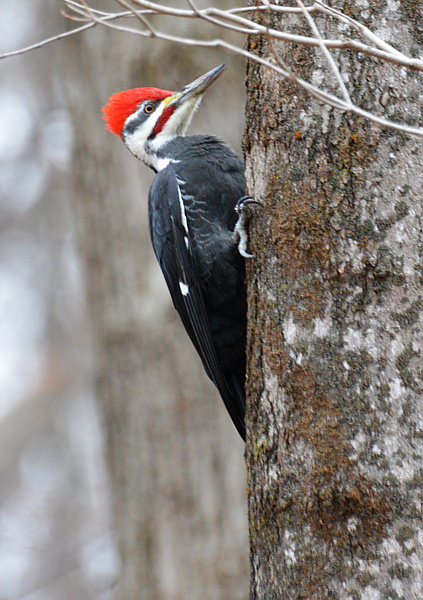
1680x1050 wallpaper
A Western Visitor
December 26th, 2015
It's been an amazing few months for birders in Ottawa, with rarity after rarity. Many of them should be well south of here by now--the Bullock's Oriole, still hanging out in its favorite apple tree in Pakenham, should be in the tropics! But so far, our exceptionally mild winter has been a blessing to them.
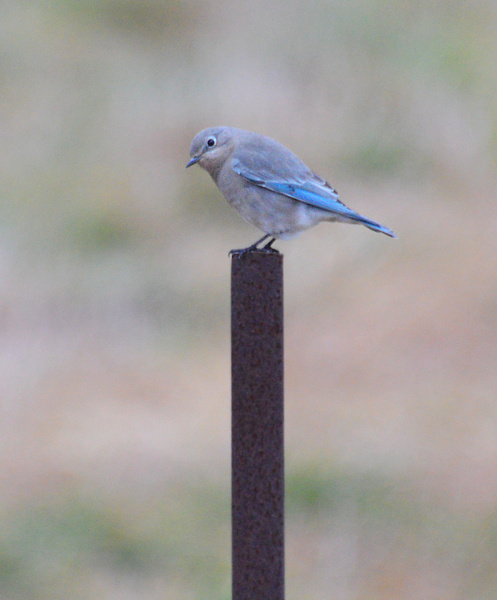
This female Mountain Bluebird has also been around for weeks. Like the Bullock's Oriole, she's a bird of the west, and apparently flew east (or got blown east) when she meant to fly south. She too has a favorite spot: the intersection of Century and Goodstown in Richmond, where she searches for insects in the still-snowless grassy field, and eats berries in the tree across the street. I took this shot from my car to avoid spooking her. (And I can't tell if that's my camera she's tilting her head at, or a potential food item!)
I worry for both of these birds once winter finally happens for real. The oriole is probably stuck, as she will not be able to either survive dead of winter or build up enough energy reserves to travel south. (Though people are doing their best to help her by putting up orange-slice feeders.) However, a Mountain Bluebird is more accustomed to temperate-zone winters than an oriole. They naturally winter as far north as Colorado. It's probably not in her best interests to stay here, so, I hope to hear that she swiftly disappears in the coming snow/cold snap, and I will assume that she has taken the hint and continued on her way.
A Needle In A Snowstack
November 11th, 2015
Today I was treated to what was probably my finest mega-rarity yet: a bird that is here in Ontario for the first time in recorded history! It's called a Pink-Footed Goose, breeds in Iceland and Greenland, and somehow ended up travelling with a migrant flock all the way to North America.
This bird is a 1 in 100,000 (literally) needle in a haystack, part of a flock of tens of thousands of migrating Snow Geese massed in the fields near Casselman. And that is a spectacle I had never seen before, either--thousands, yes, but not tens of thousands. It gave me a fresh appreciation for why they're called Snow Geese. On the ground, they cluster so densely they look like a layer of snow. In the air, they look like a blizzard.
I joined a group of about ten other birders on Lafleche Road near Highway 138, all scanning the flock with scopes. They actually had the bird in sight when I arrived, but before I could get it in my sights, the entire flock spooked, took to the air, swirled around and finally landed again, shuffling the deck. (Just to keep things interesting, they typically shuffle the deck like that every half hour or so.)
After an hour of fruitless searching I was about to give up. Then I saw Tony Beck arrive and figured, well, if anyone is going to find it, it's going to be him. So I texted my husband and told him I might be back late, blew some warm air onto my hands, and settled back in. And a half hour later I watched an unmistakable Pink-Footed Goose plowing his way through the snowy multitudes!
No pictures today, but I promise to take the camera back up soon. Speaking of snow-white creatures, I'm hoping to photograph an ermine this winter...
Sometimes nature comes to you
August 23rd, 2015
I haven't been getting out on nature walks much lately (waiting for a plantar fasciitis to heal up), but sometimes nature comes to you! I was out taming my overgrown meadow of a back lawn a few weeks ago, when I found this beauty.
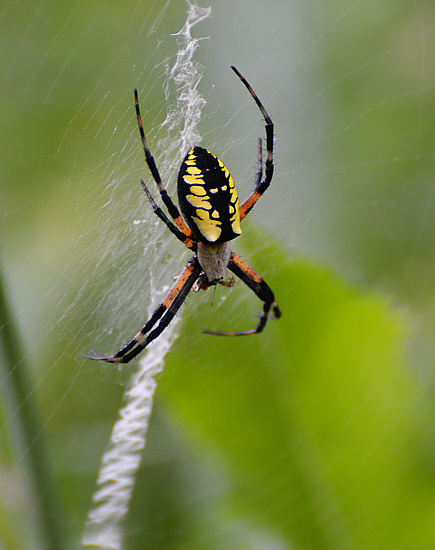
Argiope aurantia, known by many names including golden garden spider (the etymology of her Latin name is "gilded silver-face.") She was well over an inch long. I rushed inside to get the camera, and my first picture when I got back was of her busily wrapping up her latest prey.
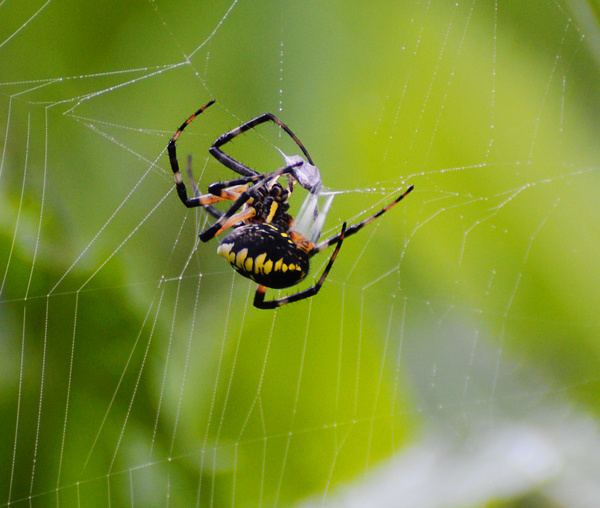
She finished with that quickly and then headed back to the center of her web.
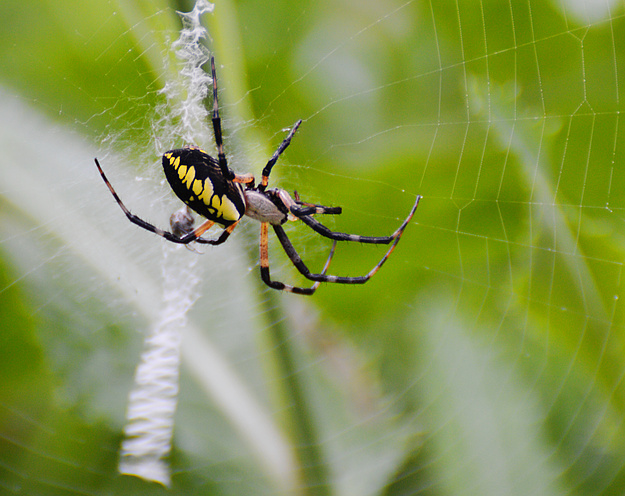
1680x1050 wallpaper
The dense, zigzag vertical structure is called a "stabilimentum", and is characteristic of the webs of these kinds of spiders. Scientists don't know for sure why they do it. (The original theory, now discarded, is that it helped stabilize the web somehow.) According to one of my Facebook commenters, it has been discovered that the stabilimentum reflects ultraviolet light. Some flowers use ultraviolet patterns to attract pollinating insects, so the purpose may be to attract prey in that fashion.
Cedar Grove Bugs
August 9th, 2015
After reading Gillian Mastromatteo's many accounts of Cedar Grove Nature Trail, I finally decided to go there and see what I could see. The trail is located near North Gower on Roger Stevens Drive, part of a large conservation area called Marlborough Forest.
The first thing to say is that this is the most deer fly infested place I've been, topping even Larose Forest. I'm learning not to get psyched out by deer flies in Ontario, since the variety we have here seldom seems to bite (seldom--not never, seldom. I do not recommend letting an Ontario deer fly be at leisure on your body.) As opposed to, say, the deer flies at Outer Banks, which very much bite and bite hard. But when there are fifty-some flies buzzing around you and getting tangled in your hair, it gets old fast even when they don't bite.
Gillian has told stories of walking through these woods attended by a swarm of deer flies, until a group of large dragonflies comes along and picks them off one by one. I thought it sounded like fun to be a dragonfly feeder, so I waited...and waited, but my knights in shining chitin failed to show. So I doused myself in about a gallon of bug spray. Which helped, though not nearly as much as you might think.
The good news is that the trail was also teeming with interesting, less obnoxious insects. It was in fact more rich with small insect life than anywhere I've been. Many of them were attracted to the black-eyed susans that were abundantly in bloom. Most were too small for my telephoto lens to properly capture (which drives my hunger for a macro lens), but here are a few I did manage.
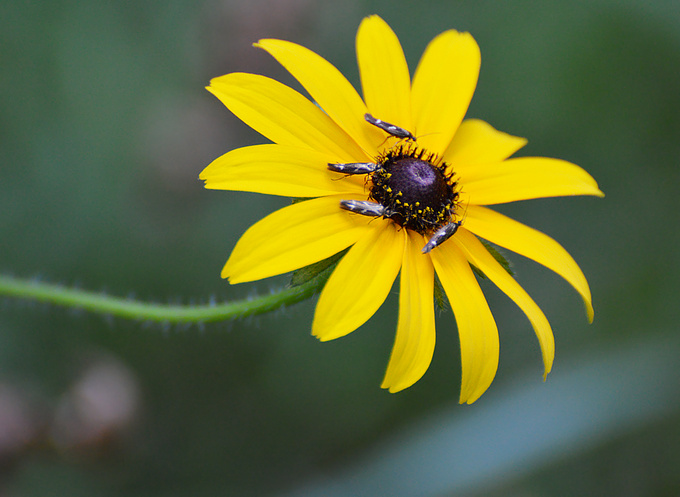
1680x1050 wallpaper
When I first arrived these little insects were so perfectly arranged, they looked like part of the flower. I was stumped by them and figured they were probably in one of the many categories of miscellaneous small bugs (treehoppers, leafhoppers, planthoppers, plant bugs...) that I was little familiar with. The folks on BugGuide were finally able to enlighten me: they are in the "flower moth" family, probably Landryia impositella. I would never have guessed that these tiny little guys were a type of moth! Clearly an understudied insect, since you can't even find a Wikipedia page until you get up to the Family level (Scythrididae), and even them it's little more than a stub.
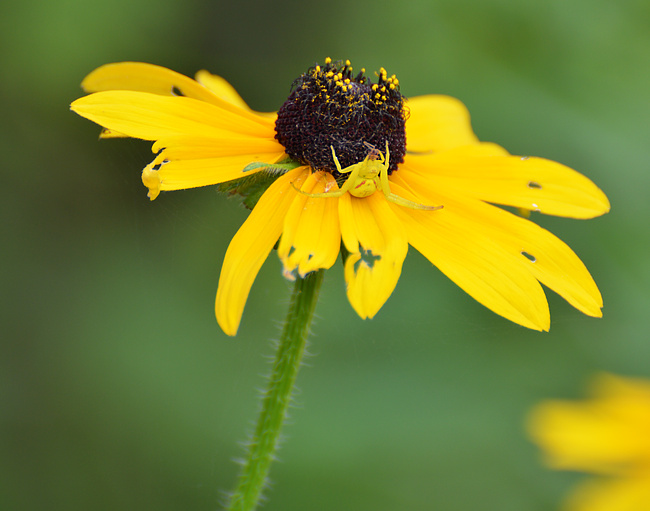
A Goldenrod Crab Spider. Crab spiders are ambush predators, lying in wait with their long front legs wide open ready to grab. They can slowly change color from white, to pale greenish-yellow, to bright yellow, or back, to camouflage against the flower they're on. (The camouflage is both a hunting aid and a defense against their own predators.) This one wasn't quite a match yet to the deep orangey-yellow of the black-eyed susan, which is probably why every small insect I saw land on the flower quickly took off again!
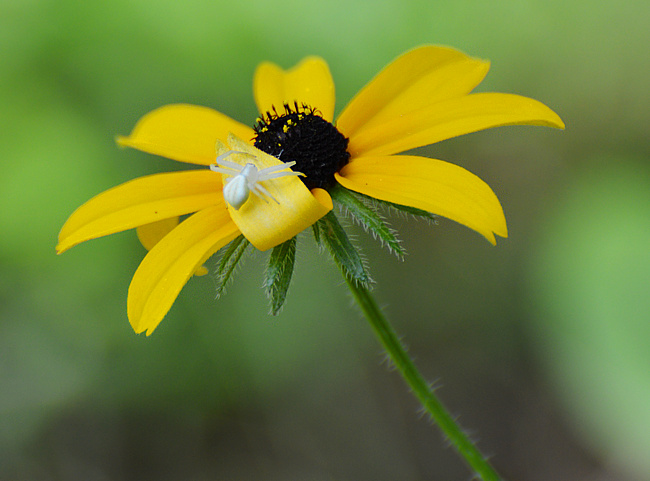
This one's color was so off it decided its best course of action was to hide.
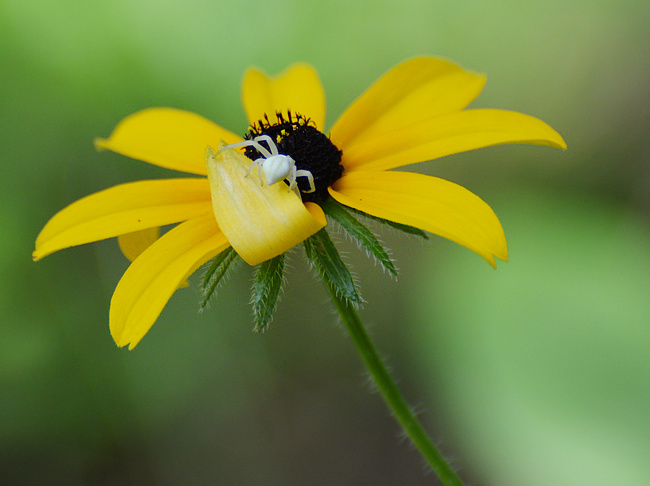
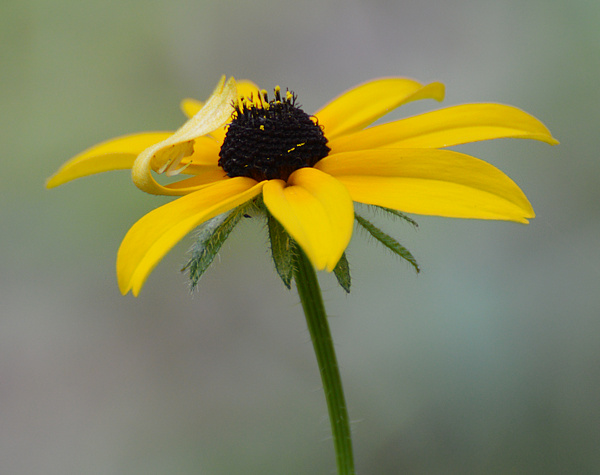
Anxious Mom
July 31st, 2015
I was on the bike path near Corkstown Road when this doe came walking down the fence line, stopped, and gave me a long, hard stare. Can you see what she's nervous about?
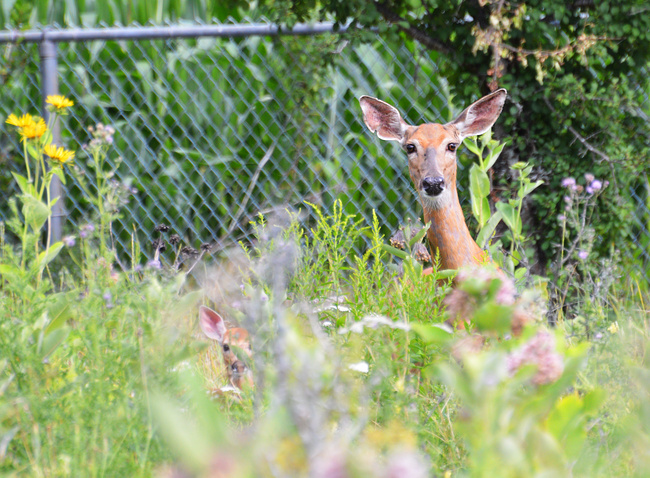
1680x1050 wallpaper
Mating Jewelwings
July 27th, 2015
While I spent most of my walk at Sugarbush Trail photographing butterflies, when I got to Chelsea Creek the beautiful Ebony Jewelwings captured my attention.
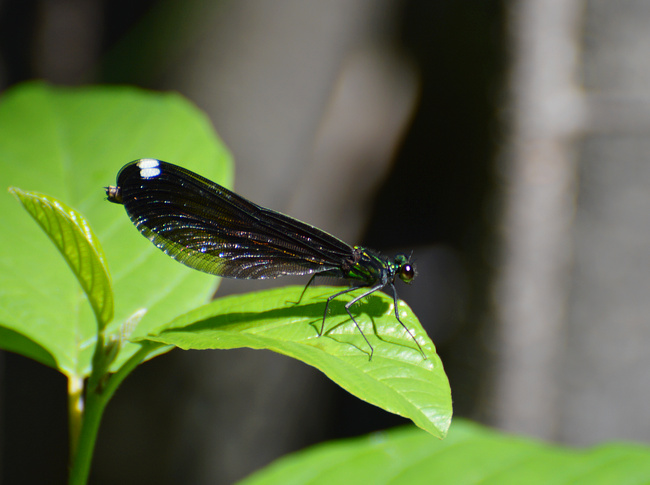
1680x1050 wallpaper
Jewelwing courtship antics rival those of birds. I watched two males chase each other around for what seemed like forever, fluttering in endless circles, metallic blue-green bodies sparkling in the sun. Numerous female jewelwings, perched on the nearby vegetation, also watched. Finally one of the males seemed to win the fight.
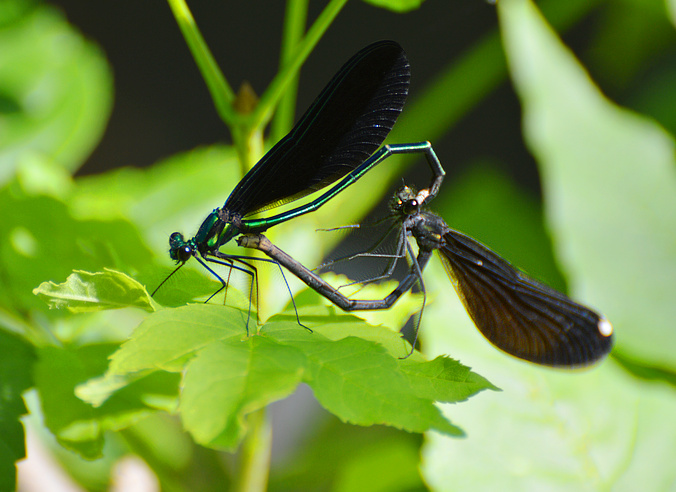
1680x1050 wallpaper
Sugarbush Leps
July 24th, 2015
Some butterflies and moths from an early-July stroll at Sugarbush Trail.
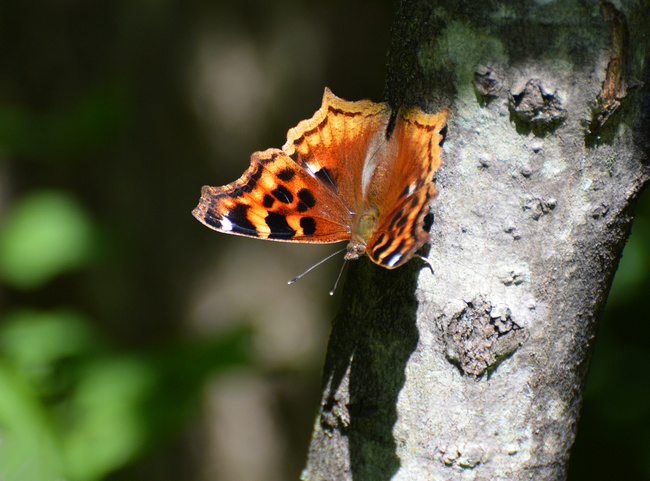
1680x1050 wallpaper
I assumed by the jagged wing edges that this was an Eastern Comma / Question Mark (a pair of common lookalike butterflies), but couldn't get over how big and beautiful it was. Neither of those had ever struck me that way. When I studied my photos back home, the fine details gave it away as a Compton Tortoiseshell--a new one for me!
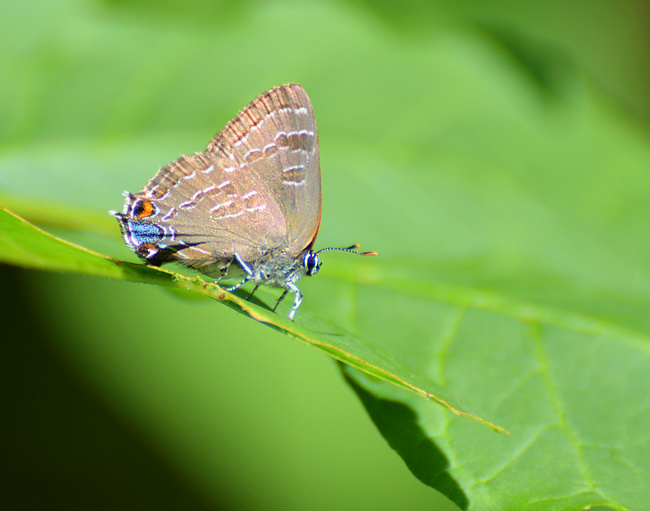
A Banded Hairstreak. My first sighting of a hairstreak butterfly (years ago) was surreal. My eyes couldn't make sense of it. It seemed that somehow a bland butterfly had been superimposed over a colorful one, and the bland facade was peeling away at the corner.
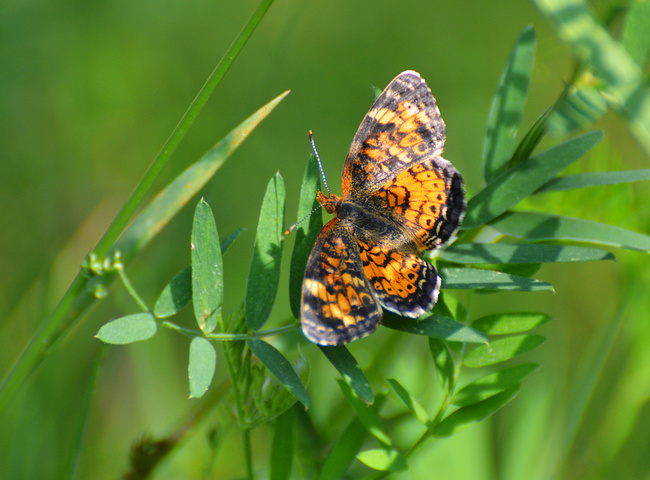
1680x1050 wallpaper
A Crescent butterfly, probably Northern Crescent.
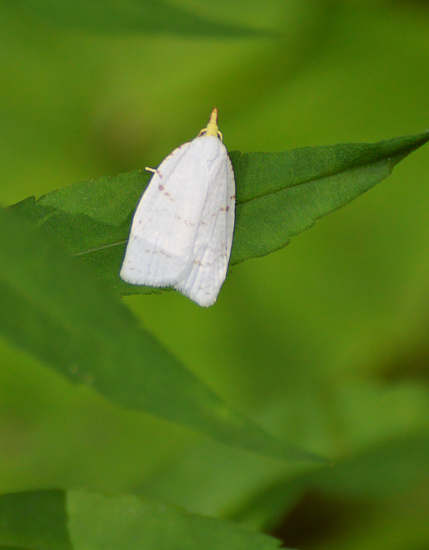
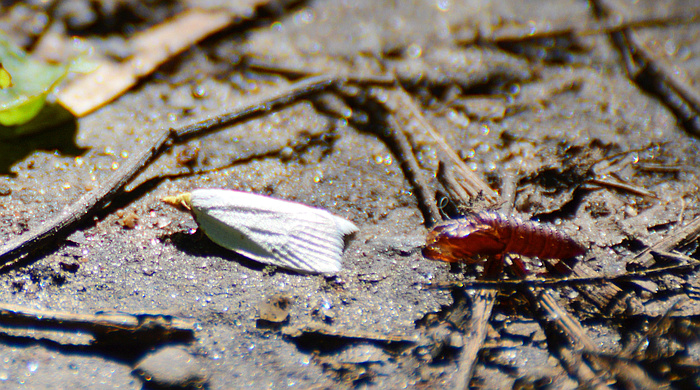
I don't know what moth this is--Google suggests perhaps a Maple-Basswood Leafroller Moth--but I'd swear it's trying to mimic a fallen white flower petal. Even the head looks like a plant part! Whatever it is, it's abundant in the Gatineau in summer. Those bits of white debris on the trail might not be debris.
Note the discarded chrysalis in the second picture. I didn't notice it myself when taking the picture.
After six years of trying
July 20th, 2015
'Tis the season of parental hyper-vigilance. Avian parents, that is. Each summer, I experience this phase where birds become noisy and obvious if I stumble into their nesting area. Sometimes, if they have a young fledgling hidden nearby (one who has left the nest but isn't independent yet), they will actually go out of their way to attract my attention to themselves--all the better to draw it away from their vulnerable chick. This can result in stunning views of species that are normally retiring and elusive.
To wit:
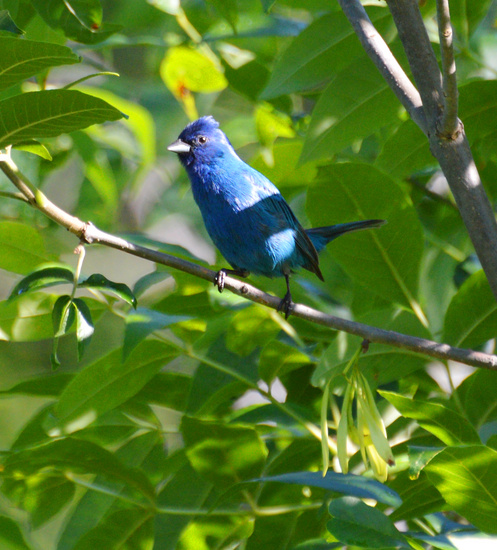
An Indigo Bunting at Watt's Creek Trail. The mix of fields and woods there attracts them, and you can always hear them singing in summer. With binoculars you can sometimes see one too, usually perched in a distant treetop. But to get this good a view of one is a rare event!
Bladder Campion
July 17th, 2015
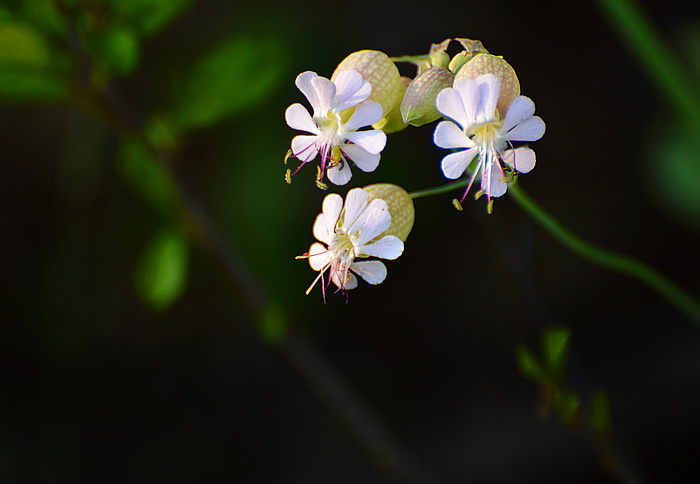
|
